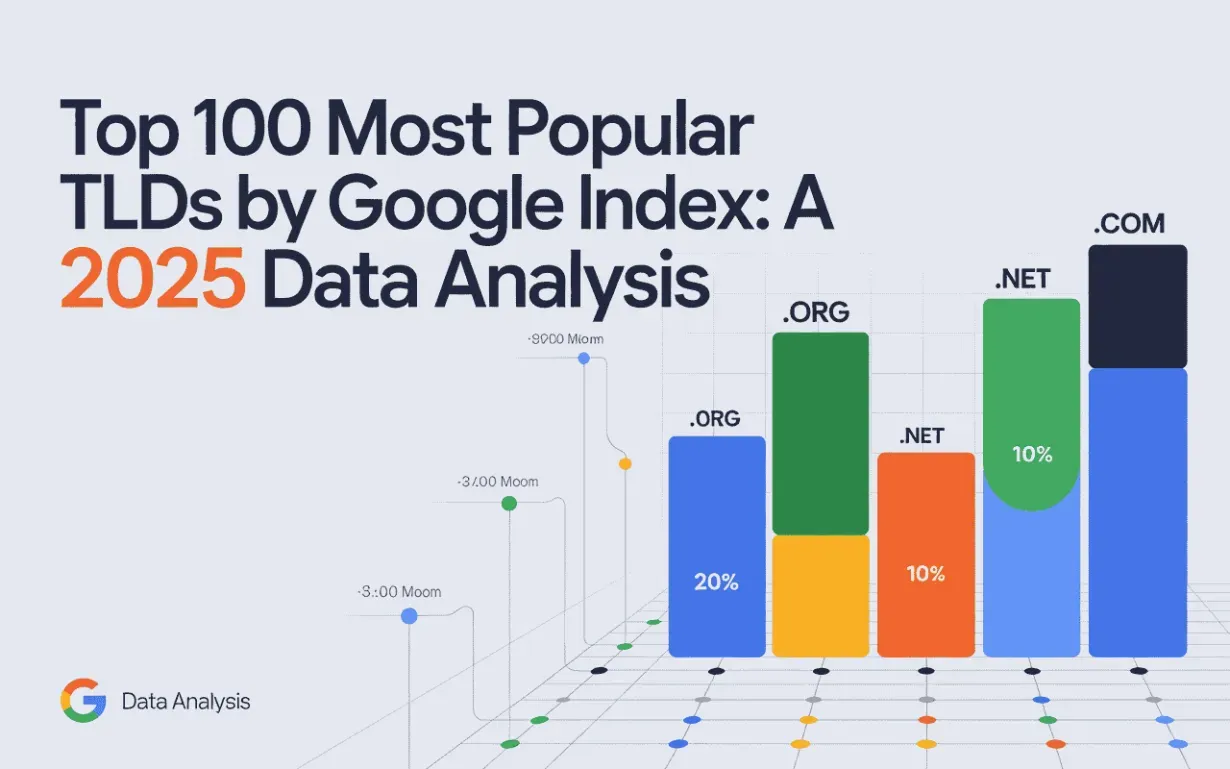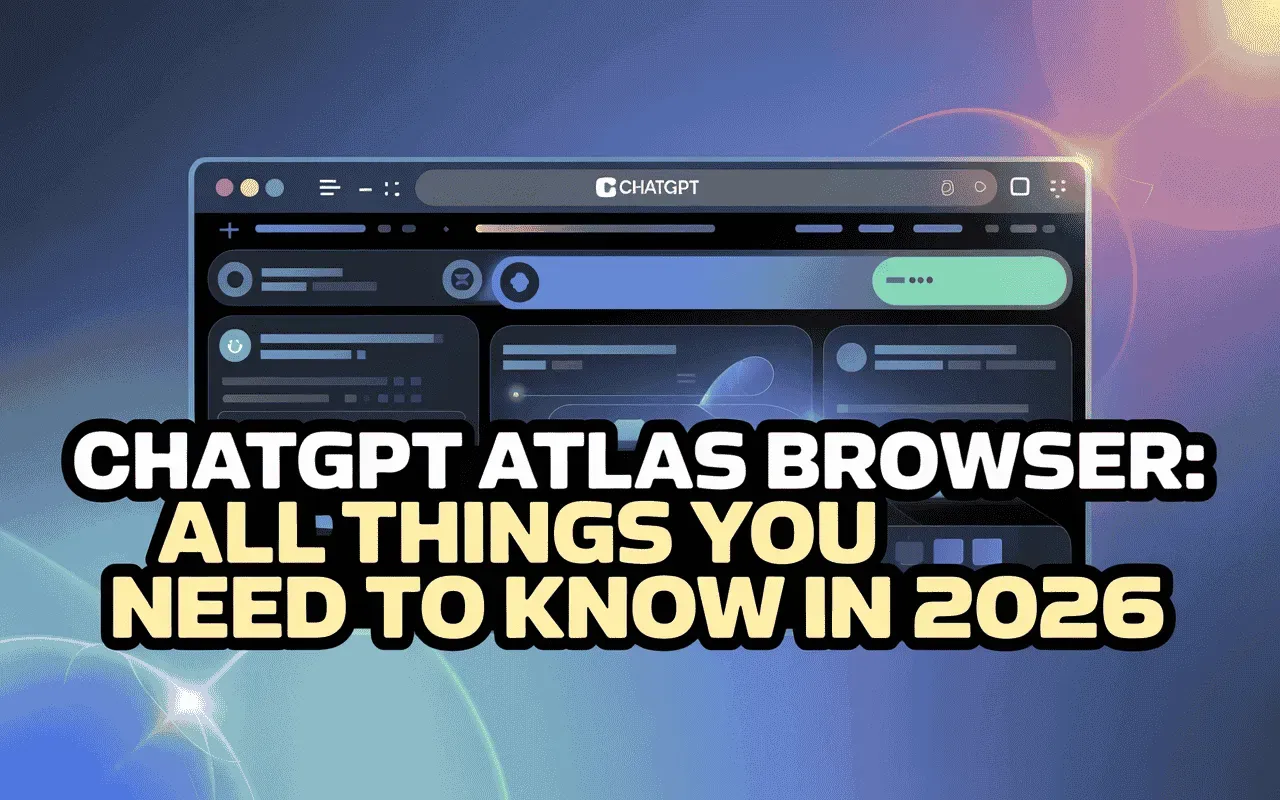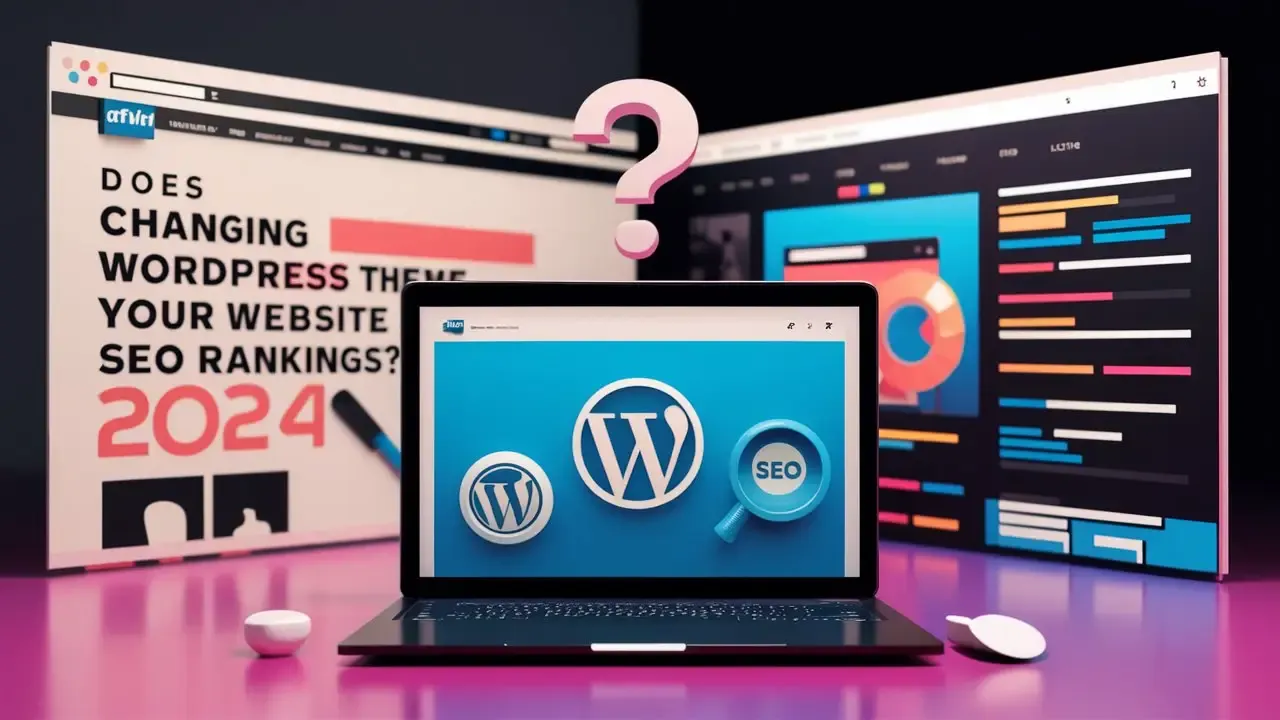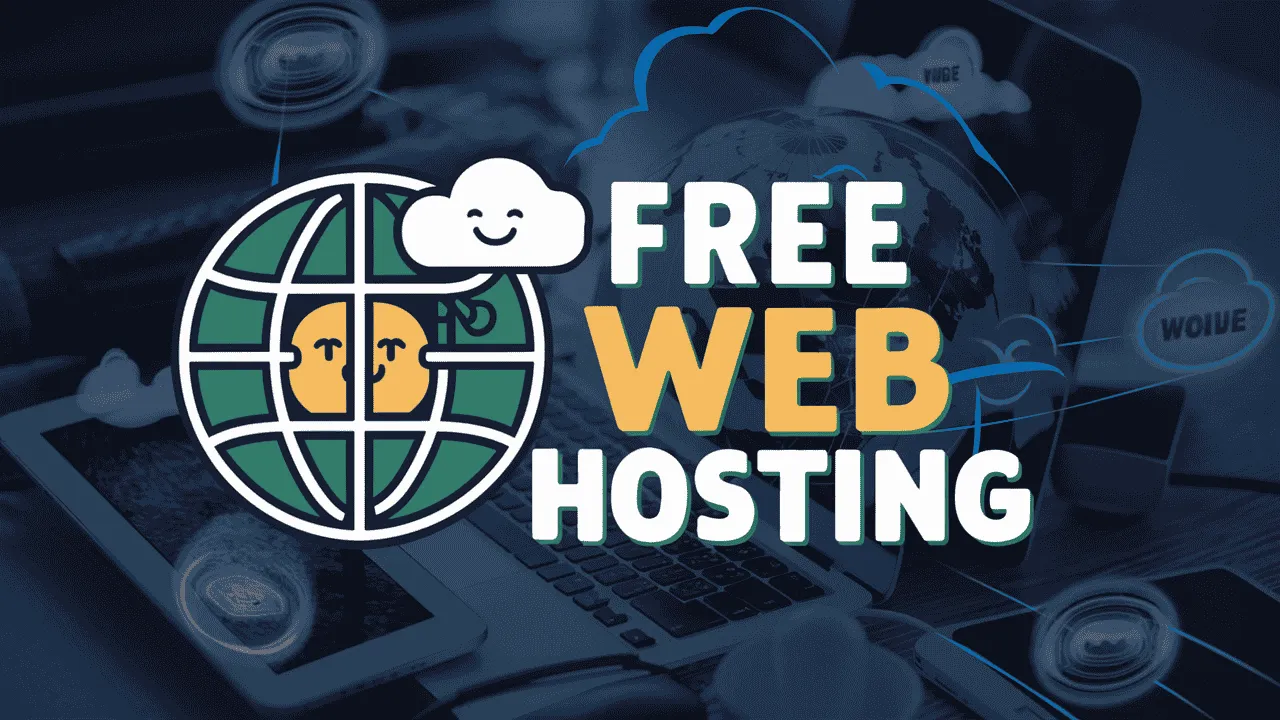Picking the right website ending (like .com or .org) is a big deal for getting noticed online. In 2025, things are always changing, so Owrbit took a deep look at the most popular TLDs to see which ones Google likes best.
This report shows you the top TLDs by Google Index. This information is super helpful for anyone with a website, especially with so many new domain options available. Knowing which TLDs Google trusts can help you get more visitors and improve your website’s rank.
So, what did we find? Our analysis of the top TLDs by Google Index confirms that .com is still the leader. But, we also saw that many newer or country-specific domains are becoming some of the most popular TLDs.
We broke down the top 100 most popular TLDs and looked at why they are so popular. Factors like user trust and where they are used play a big role.
If you are starting a new website, thinking about changing your old one, or just curious, this report on the most popular TLDs will help you make a smart choice. Let’s explore which TLDs are winning the internet in 2025!
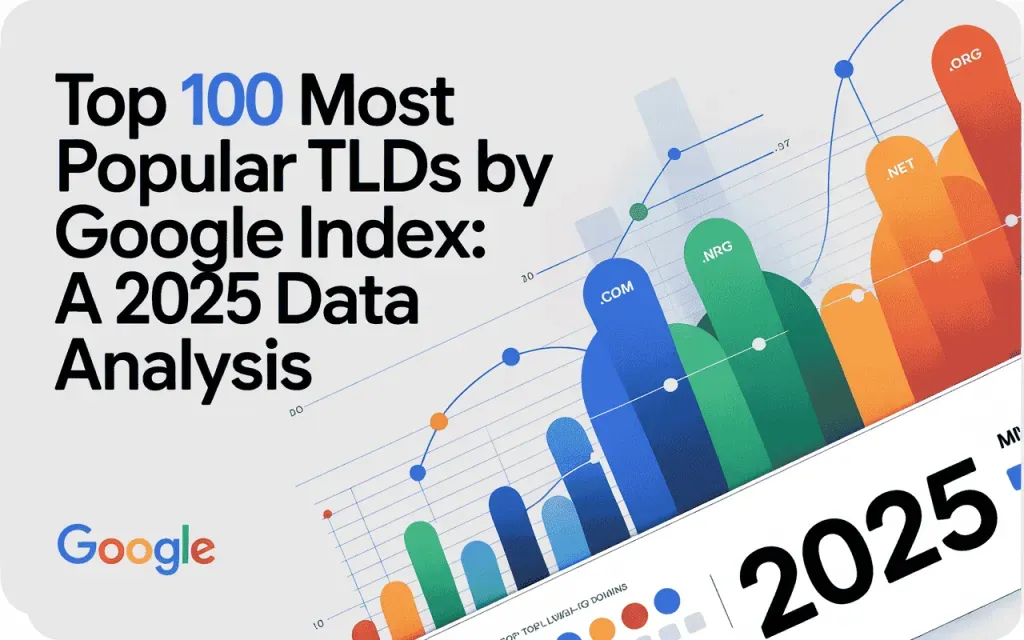
Introduction to TLDs :
Ever noticed the .com, .org, or .net at the end of every website address you visit? That’s called a Top-Level Domain, or TLD.
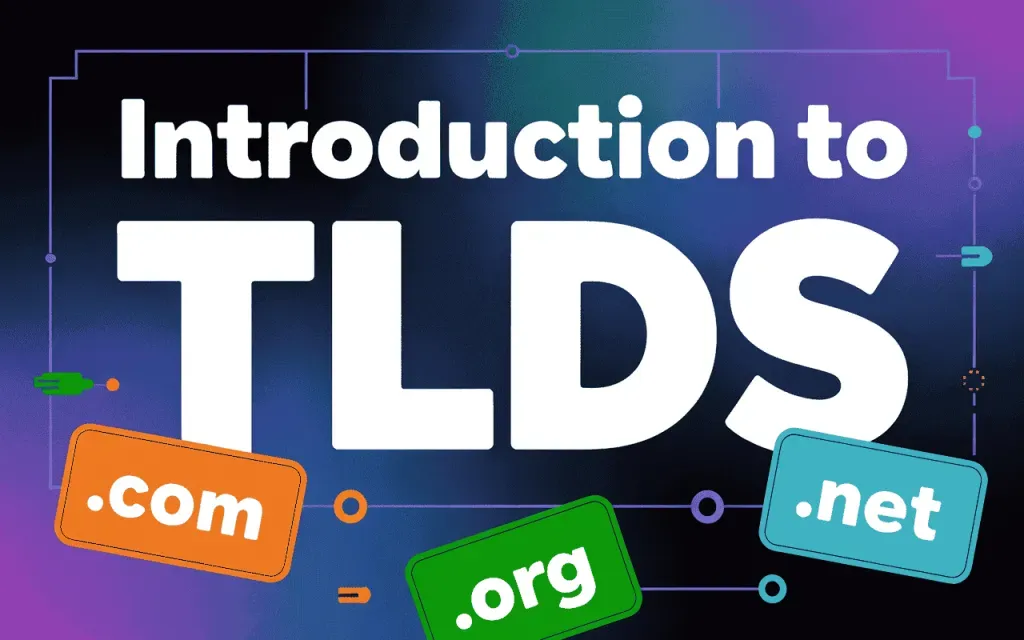
What is a TLD?
A Top-Level Domain (TLD) is the last and most general part of a domain name, located to the right of the final dot. For instance, in the domain name www.google.com, the TLD (also called the domain extension) is .com.
The TLD is a fundamental component of the internet’s Domain Name System (DNS), which acts as the internet’s phonebook. The DNS translates human-readable domain names (like google.com) into machine-readable IP addresses (like 142.250.190.78) that computers use to find each other.
The TLD’s primary purpose is to help classify and categorize websites. It sits at the very top of the DNS hierarchy, just below the “root” level.
Does Your Domain Extension (TLD) Really Affect SEO?
While Google has stated that your TLD (like .com or .shop) isn’t a direct ranking factor, it has a powerful indirect impact on your SEO. This is all about human behavior and trust.
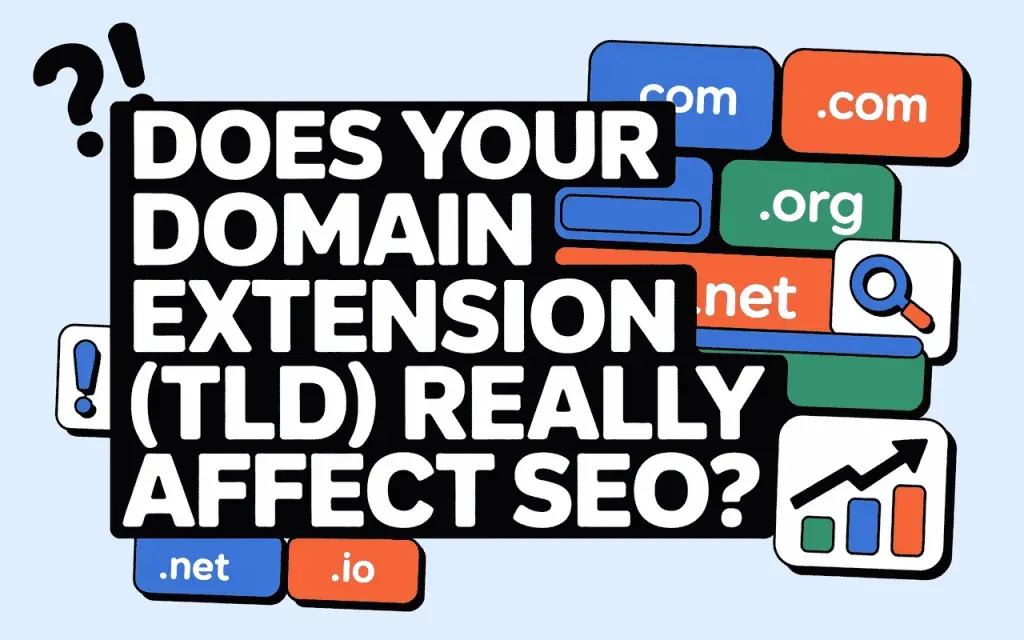
- 🧠 User Trust and Credibility
- This is the most significant factor. Users have been trained for decades to trust certain TLDs more than others.
- High Trust: .com is the king. It’s the most recognized and trusted TLD globally. Extensions like .org (for non-profits) and .gov (for government) also carry high authority.
- Medium Trust: Country codes (ccTLDs) like .co.uk or .in build high trust within their specific regions. Newer gTLDs like .tech or .store are also gaining acceptance.
- Low Trust: Some TLDs (like .xyz, .biz, or .info) have historically been associated with spam or low-quality websites. Even if your site is excellent, a “spammy” TLD can make users hesitate.
- Why it matters for SEO: A user who trusts your domain is more likely to click it.
- This is the most significant factor. Users have been trained for decades to trust certain TLDs more than others.
- 🖱️ Click-Through Rate (CTR)
- Your Click-Through Rate (CTR) is the percentage of people who click your link after seeing it in search results.
- The Scenario: Imagine a user sees two results for “best running shoes”:
bestshoes.combestshoes.xyz
- The Action: Most users will instinctively click the .com link because it feels safer and more professional.
- The Scenario: Imagine a user sees two results for “best running shoes”:
- Why it matters for SEO: A high CTR sends a strong positive signal to Google. It tells the algorithm that your page is a good and relevant answer to the user’s query, which can help boost your rankings over time. A low-trust TLD can lower your CTR and hurt your SEO.
- Your Click-Through Rate (CTR) is the percentage of people who click your link after seeing it in search results.
- 🌍 Geo-Targeting (Local SEO)
- This is the one area where a TLD has a direct and powerful effect on your rankings.
- ccTLDs (Country-Code TLDs): If your website uses a ccTLD like .de (Germany), .fr (France), or .ca (Canada), you are sending the strongest possible signal to Google that your site is intended for audiences in that specific country.
- Why it matters for SEO: This will automatically help you rank higher in search results within that country. It’s a huge advantage for local businesses. However, it can make it much harder to rank globally, outside of that country. A .com domain is treated as global by default.
- This is the one area where a TLD has a direct and powerful effect on your rankings.
- 🏷️ Branding and Niche Relevance
- Newer TLDs (nTLDs) can help you communicate what you do before anyone even clicks.
- Clear Messaging: A domain like
my.artorcoffee.shopinstantly tells users what your site is about. This can make your brand more memorable. - Why it matters for SEO: A clear, relevant, and memorable brand name encourages repeat visits and direct traffic (users typing your address directly). These are positive user engagement signals that Google values
- Clear Messaging: A domain like
- Newer TLDs (nTLDs) can help you communicate what you do before anyone even clicks.
- 🗣️ Memorability and “Radio Test”
- How easy is it to remember and share your domain?
- The “Radio Test”: If you heard your website address on the radio, would you know how to type it?
- The Problem: If you say “My business is ‘awesome store dot tech’,” many people will later type “awesomestore.com” by default and get lost.
- Why it matters for SEO: Using a non-standard TLD can cause you to “leak” valuable direct traffic and brand recognition to whoever owns the .com version. This lost traffic can negatively impact your site’s perceived authority.
- How easy is it to remember and share your domain?
So, when picking your domain, remember this: Google cares about your content, but your users care about trust. Always choose the TLD that makes your website feel safe and professional.
Overview of the Top 100 Most Popular TLDs by Google Index :
When analyzing the “popularity” of a Top-Level Domain (TLD), most reports focus on registration numbers—how many domains have been bought. A far more revealing metric, however, is the total number of pages indexed by Google, which measures how many pages of content exist on that TLD. This metric provides a clear view of a TLD’s historical footprint and its true volume of content on the web.
Here is the definitive list of the top 100 TLDs, ranked by their total number of indexed URLs :
Checkout Domain Name Hack : Buy Domain Name At Cheapest Price 2024
| Rank | TLD | Indexed URLs | Rank | TLD | Indexed URLs |
| 1 | .COM | 25,270,000,000 | 51 | .TK | 310,000,000 |
| 2 | .NET | 7,360,000,000 | 52 | .GR | 309,000,000 |
| 3 | .ORG | 6,010,000,000 | 53 | .IL | 263,000,000 |
| 4 | .JP | 3,850,000,000 | 54 | .NEWS | 263,000,000 |
| 5 | .DE | 3,500,000,000 | 55 | .RO | 259,000,000 |
| 6 | .UK | 2,560,000,000 | 56 | .MY | 242,000,000 |
| 7 | .FR | 2,510,000,000 | 57 | .BIZ | 232,000,000 |
| 8 | .BR | 2,440,000,000 | 58 | .IE | 226,000,000 |
| 9 | .IT | 2,200,000,000 | 59 | .ZA | 225,000,000 |
| 10 | .RU | 1,970,000,000 | 60 | .NZ | 223,000,000 |
| 11 | .ES | 1,660,000,000 | 61 | .SG | 222,000,000 |
| 12 | .ME | 1,460,000,000 | 62 | .EE | 216,000,000 |
| 13 | .GOV | 1,410,000,000 | 63 | .TH | 208,000,000 |
| 14 | .PL | 1,340,000,000 | 64 | .IO | 201,000,000 |
| 15 | .CA | 1,320,000,000 | 65 | .XYZ | 191,000,000 |
| 16 | .AU | 1,300,000,000 | 66 | .PE | 187,000,000 |
| 17 | .CN | 1,270,000,000 | 67 | .BG | 158,000,000 |
| 18 | .CO | 1,230,000,000 | 68 | .HK | 148,000,000 |
| 19 | .IN | 1,140,000,000 | 69 | .RS | 138,000,000 |
| 20 | .NL | 1,090,000,000 | 70 | .LT | 132,000,000 |
| 21 | .EDU | 1,070,000,000 | 71 | .LINK | 131,000,000 |
| 22 | .INFO | 923,000,000 | 72 | .PH | 129,000,000 |
| 23 | .EU | 752,000,000 | 73 | .CLUB | 127,000,000 |
| 24 | .CH | 746,000,000 | 74 | .SI | 123,000,000 |
| 25 | .ID | 649,000,000 | 75 | .SITE | 122,000,000 |
| 26 | .AT | 633,000,000 | 76 | .MOBI | 114,000,000 |
| 27 | .KR | 627,000,000 | 77 | .BY | 111,000,000 |
| 28 | .CZ | 619,000,000 | 78 | .CAT | 108,000,000 |
| 29 | .MX | 603,000,000 | 79 | .WIKI | 103,000,000 |
| 30 | .BE | 591,000,000 | 80 | .LA | 102,000,000 |
| 31 | .TV | 565,000,000 | 81 | .GA | 97,800,000 |
| 32 | .SE | 559,000,000 | 82 | .XXX | 97,700,000 |
| 33 | .TR | 541,000,000 | 83 | .CF | 96,800,000 |
| 34 | .TW | 540,000,000 | 84 | .HR | 94,300,000 |
| 35 | .AL | 499,000,000 | 85 | .NG | 91,400,000 |
| 36 | .UA | 484,000,000 | 86 | .JOBS | 85,300,000 |
| 37 | .IR | 450,000,000 | 87 | .ONLINE | 82,600,000 |
| 38 | .VN | 436,000,000 | 88 | .KZ | 82,300,000 |
| 39 | .CL | 435,000,000 | 89 | .UG | 81,800,000 |
| 40 | .SK | 405,000,000 | 90 | .GQ | 77,200,000 |
| 41 | .LY | 394,000,000 | 91 | .AE | 77,100,000 |
| 42 | .CC | 393,000,000 | 92 | .IS | 74,800,000 |
| 43 | .TO | 392,000,000 | 93 | .LV | 74,300,000 |
| 44 | .NO | 388,000,000 | 94 | .PRO | 73,500,000 |
| 45 | .FI | 384,000,000 | 95 | .FM | 72,300,000 |
| 46 | .US | 383,000,000 | 96 | .TIPS | 72,100,000 |
| 47 | .PT | 374,000,000 | 97 | .MS | 66,700,000 |
| 48 | .DK | 352,000,000 | 98 | .SA | 64,700,000 |
| 49 | .AR | 345,000,000 | 99 | .APP | 61,700,000 |
| 50 | .HU | 313,000,000 | 100 | .INT | 22,700,000 |
The original TLDs (.com, .net, and .org) hold the top three spots, demonstrating their foundational role and massive historical content volume.
Breakdown by Categories (e.g., Generic vs. Country Code TLDs)
The list of the top 100 TLDs by indexed pages reveals a clear hierarchy dominated by a few key categories. Here is a breakdown of those TLDs based on their type.
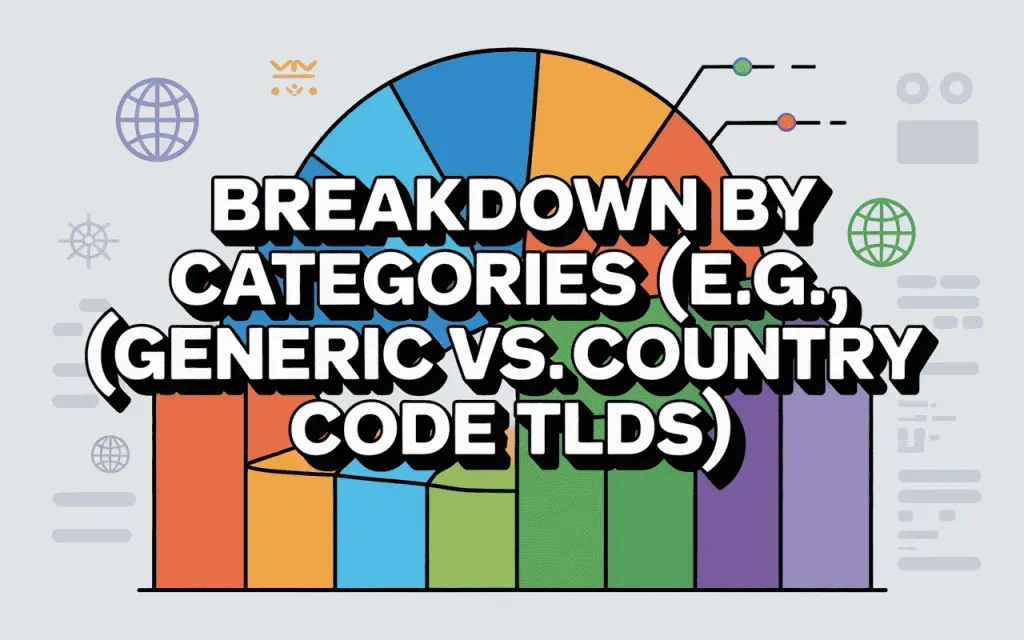
- 1. Legacy Generic TLDs (gTLDs) :
- These are the original TLDs that formed the initial backbone of the internet and remain the most recognized and dominant extensions globally. They occupy the highest ranks on the list, demonstrating the largest content footprints.
.com(Rank #1): The undisputed leader with 25.27 billion indexed pages. It is the default for commercial entities and remains the most popular TLD for new registrations in 2025, with approximately 157.2 million domains registered..net(Rank #2): With 7.36 billion indexed pages, it shows its massive historical utility, originally intended for network providers but now widely used by tech-focused businesses..org(Rank #3): This TLD has 6.01 billion indexed pages and is traditionally associated with non-profits, open-source projects, and community organizations, giving it a high degree of public trust.- Other legacy gTLDs on the list include
.info(#22) and.biz(#57).
- These are the original TLDs that formed the initial backbone of the internet and remain the most recognized and dominant extensions globally. They occupy the highest ranks on the list, demonstrating the largest content footprints.
- 2. Country-Code TLDs (ccTLDs)
- This is the largest and most common category represented in the Top 100. A ccTLD is a two-letter domain designated for a specific country or territory. Their high-volume presence on the index list indicates that many countries have built massive, independent digital economies.
- Dominance in the Top 20: The list is heavily populated by these national powerhouses, including
.jp(Japan, #4),.de(Germany, #5),.uk(United Kingdom, #6),.fr(France, #7),.br(Brazil, #8), and.ru(Russia, #10). - Market Alignment: This ranking of content volume closely mirrors the 2025 registration data. The ccTLDs
.cn(China, #17 on the index list) and.de(Germany) are the top two ccTLDs by registration volume globally, second only to.com. - The
.tkAnomaly: It is important to note that some ccTLDs, like.tk(Tokelau, #51), appear high on the list. This is not due to organic content but because of a “free domain registration” model. This model has led to a high volume of indexed spam or low-quality pages, which demonstrates that indexed volume does not always equal high-quality content.
- Dominance in the Top 20: The list is heavily populated by these national powerhouses, including
- This is the largest and most common category represented in the Top 100. A ccTLD is a two-letter domain designated for a specific country or territory. Their high-volume presence on the index list indicates that many countries have built massive, independent digital economies.
- 3. Sponsored/Restricted TLDs (sTLDs)
- These are TLDs intended for a specific, restricted community. While they have far fewer total domains registered compared to
.com, the websites they host are often large, authoritative institutions (like universities and government bodies) that publish a massive number of pages..gov(Rank #13): Reserved for the U.S. government. Its 1.41 billion indexed pages represent a vast archive of public documents and agency websites..edu(Rank #21): Reserved for U.S. post-secondary educational institutions. Its 1.07 billion indexed pages come from large university websites, extensive libraries, and academic research portals..int(Rank #100): A specialized TLD used by international treaty-based organizations.
- These are TLDs intended for a specific, restricted community. While they have far fewer total domains registered compared to
- 4. “New” Generic TLDs (nTLDs)
- This category includes the hundreds of new TLDs introduced after 2012 to expand the domain space, such as
.app,.online, and.shop.- Small but Growing Footprint: The most striking takeaway is that nTLDs have a very small presence in the Top 100 by indexed pages. This is in sharp contrast to their high registration growth in 2024-2025.
- On the List: The few nTLDs that have built up enough content to break into the Top 100 include
.news(#54),.io(#64) (popular with tech startups ),.xyz(#65),.club(#73),.site(#75),.online(#87), and.app(#99). - The “Registration vs. Content” Gap: This discrepancy highlights a key market dynamic: a TLD can be popular for registrations (like
.aior.shop) long before it builds up a significant volume of indexed content. Many registered nTLDs are “parked” or not yet associated with active, content-heavy websites.
- This category includes the hundreds of new TLDs introduced after 2012 to expand the domain space, such as
In summary, the Google Index list is primarily a map of historical content volume. It is dominated by the original legacy TLDs and the major national ccTLDs, which have had decades to build their content archives.
Find Your Perfect Domain Name with Owrbit :
Every big idea, every business, and every brand starts with a name. Your domain name is your address on the internet—it’s the first thing your customers see and the name they will remember.
At Owrbit, we make it simple to find and register the perfect domain for your project.
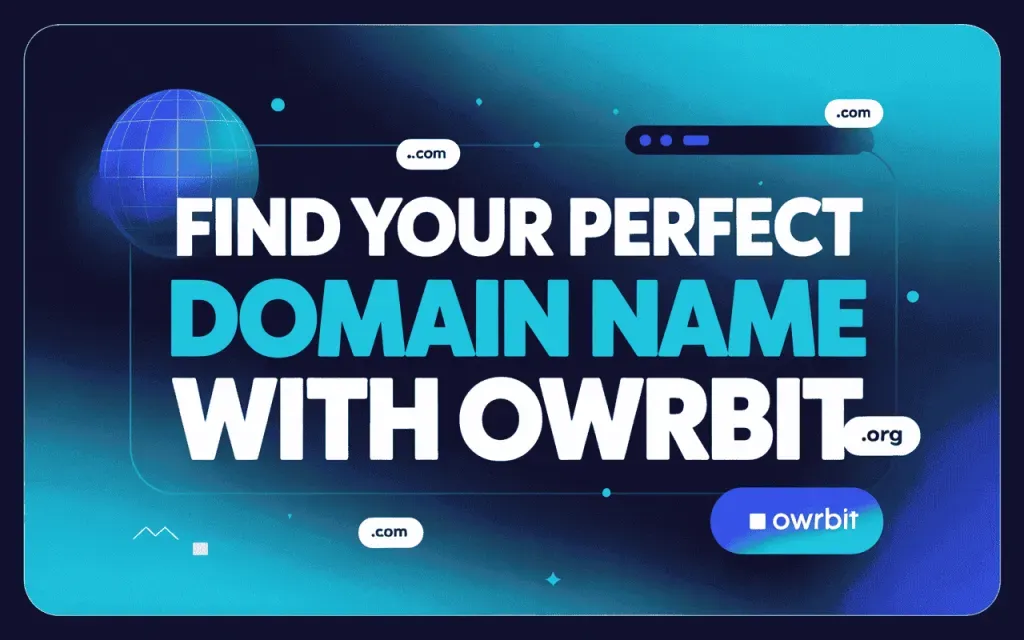
Whether you’re looking for a classic .com, a trusted .org, or one of the most popular TLDs to match your industry like .tech, .shop, or .ai, your ideal online address is waiting.
Don’t let your dream domain get taken by someone else. Search for your name today and start your online journey in just a few minutes.
🚀 Why Owrbit is Your Best Partner for Online Success
Choosing a name is just the beginning. You need a partner who can help you grow from an idea into a successful brand. Here’s why Owrbit is the only one-stop shop you’ll ever need:
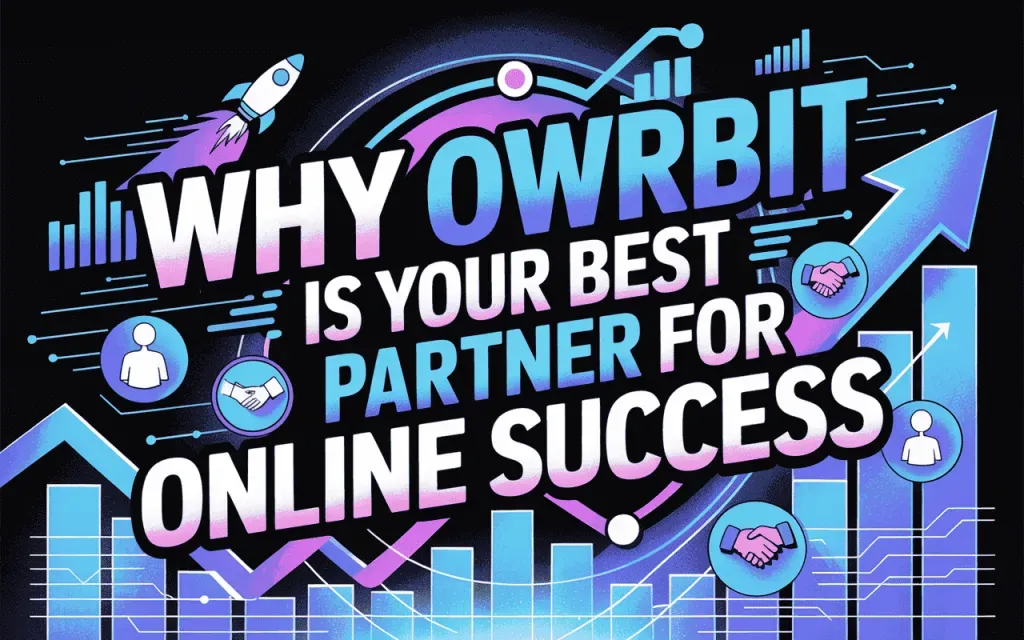
- We’re More Than Just Domains Owrbit is your complete digital partner. We start by helping you register the perfect domain, but we don’t stop there. We provide fast, secure web hosting and professional website development all under one roof. No need to manage three different services—we handle it all.
- Expert Support, 24/7 When you have a question at 3 AM, you get an expert, not a robot. Our dedicated support team is available 24/7 to help you with everything from simple domain setups to complex hosting questions. Your success is our top priority.
- Simple, Fast, and Secure Our platform is built to be easy. You can find, register, and manage your domains in just a few clicks. Plus, we prioritize your security, ensuring your online identity is safe and protected from day one.
- Affordable and Transparent Pricing We believe in clear, honest pricing. You get competitive rates on the most popular TLDs and all our services, with no hidden fees or surprise charges. We provide premium value so you can invest your money back into growing your business.
Don’t just build a website. Build your future with Owrbit.
Your Big Idea Starts Here: Get Online in 3 Simple Steps
You’re just a few clicks away from launching your brand. Getting started with Owrbit is fast, simple, and seamless. Here’s how you can go from an idea to a live website:

- Step 1: Find Your Perfect Domain Use our quick domain search to find and register your name. Whether you’re after a classic .com or one of the most popular TLDs like .shop or .tech, this is the first step in claiming your unique spot online.
- Step 2: Choose Your Web Hosting Plan A domain needs a home. Select one of our fast and secure web hosting plans. This is where your website’s files will live, ensuring it’s available 24/7 to your visitors.
- Step 3: Launch Your Website This is the exciting part! You can either build your website yourself using popular tools or let our expert website development team build a professional, custom site for you.
That’s it! You’re ready to share your vision with the world.
Case Studies: Successful Websites with Different TLDs
Here are some case studies of successful websites that use different Top-Level Domains (TLDs) to build their brand.
These examples show that you don’t need a .com to be successful. The key is that the TLD should match the brand’s purpose, build trust, or help define its industry.
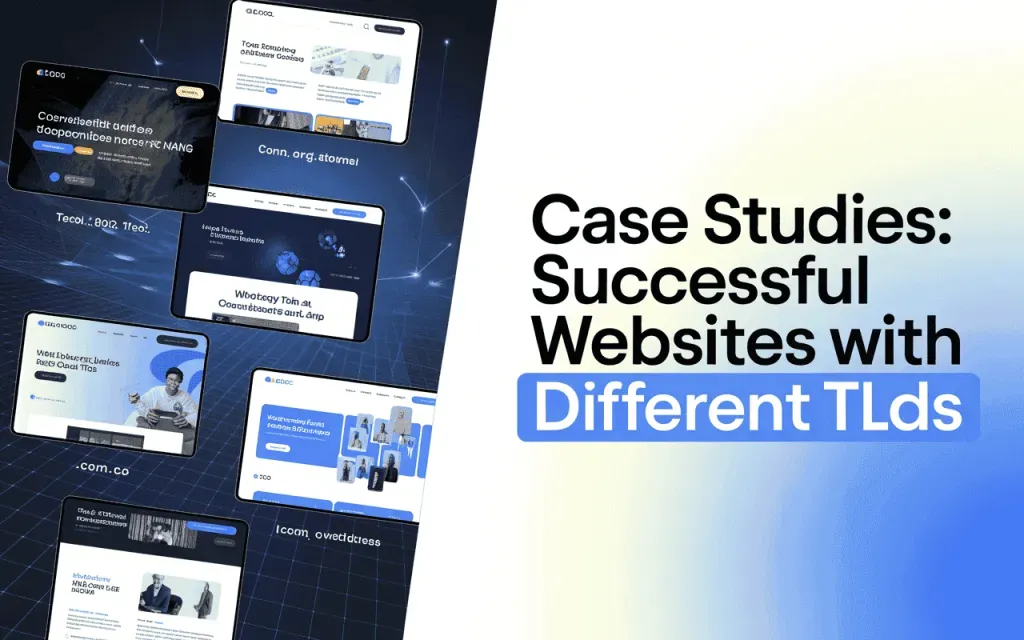
1. The Trust and Authority TLD: wikipedia.org
- Website: Wikipedia
- TLD:
.org - Why it Works: The
.orgTLD was created for “organizations” and is primarily used by non-profits. As the world’s largest free encyclopedia, Wikipedia’s success depends entirely on user trust and its non-commercial mission. Using.orginstantly signals that its goal is public knowledge, not profit. This TLD is a core part of its identity and authority, helping it become one of the top 10 most-visited websites in the world.
2. The Perfect Brand-Match TLD: twitch.tv
- Website: Twitch
- TLD:
.tv - Why it Works: This is a perfect example of a TLD reinforcing a brand. The
.tvTLD is the country code for the nation of Tuvalu, but it is licensed out to be used for “television” and video. For a platform built entirely on live streaming, the.tvextension is a perfect and memorable fit. The name “Twitch” combined with “TV” clearly communicates the service.
3. The Modern Brand TLD: cash.app
- Website: Cash App
- TLD:
.app - Why it Works: The
.appTLD is a newer extension that is meant for applications. Cash App’s brand name is its domain name. It’s extremely short, easy to remember, and perfect for a mobile-first financial company. When you hear “Cash App,” you know exactly where to go. This simple, modern TLD is a powerful branding tool that is easy to market and simple for users to type.
4. The Industry-Specific TLD: jasper.ai
- Website: Jasper
- TLD:
.ai - Why it Works: The
.aiTLD (the country code for Anguilla) has become the standard for companies in the Artificial Intelligence industry. By usingjasper.ai, the company instantly signals to potential customers that it is a modern tech company specializing in AI. This TLD acts as a powerful keyword and category marker, helping it attract the right audience and establish itself as a leader in that specific niche.
5. The Tech Community TLD: itch.io
- Website: itch.io
- TLD:
.io - Why it Works: The
.ioTLD (the country code for the British Indian Ocean Territory) became a popular “domain hack” in the tech community. In computing, “I/O” stands for “Input/Output.” This TLD was adopted by tech startups and game developers as an “insider” signal. Foritch.io, a platform for independent digital creators and game developers, the.ioextension shows that it is part of that tech community, helping it build a loyal following.
As these examples show, the most successful TLD is one that builds trust and perfectly matches your brand’s identity.
How to Choose the Right TLD for Your Business
Here is a simple guide on how to choose the right TLD for your business.
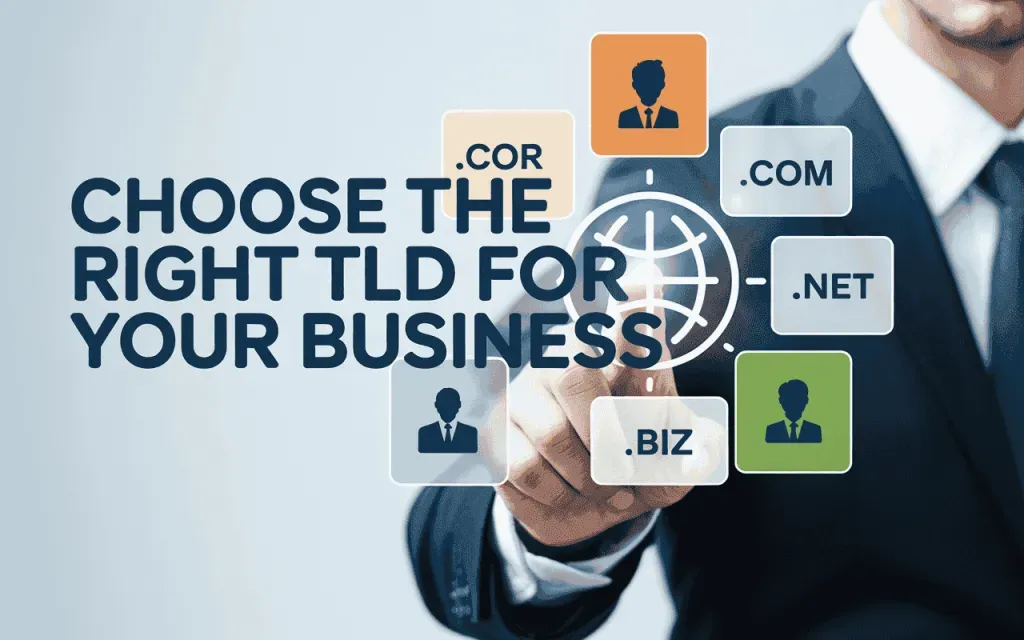
- 1. Default to .com if Possible
- Why: The .com TLD is the most recognized, trusted, and memorable TLD in the world.
- Action: Your first search should always be for your desired name with a .com extension. If it’s available and affordable, it’s almost always the best choice.
- 2. Consider Your Target Audience (Local vs. Global)
- If your audience is global or national: Stick with a generic TLD like .com, .org (for non-profits), or .net.
- If your audience is local: Use a country-code TLD (ccTLD) like .co.uk (UK), .in (India), or .ca (Canada). This is a very strong signal for local SEO and builds trust with a local audience.
- 3. Use Your Industry as a Keyword
- Why: A newer TLD (nTLD) can instantly tell customers what you do and make your brand more specific.
- Examples:
.aior.techif you are a technology company..storeor.shopif you run an e-commerce site..appif your main product is a mobile or web application..ioif you are a tech startup (it’s very popular in the tech community).
- 4. Prioritize Brand Memorability
- Why: You want a TLD that is easy to remember and type.
- Action: Choose a TLD that is short and logical. A name like
coffee.shopis much easier to remember thancoffee-shop-online.biz. - Test It: Say the full domain name out loud. Does it sound clear, or is it confusing? (This is the “radio test”).
- 5. Check for Untrustworthy Extensions
- Why: Some TLDs are heavily used by spammers and can make your website look less credible.
- Action: Be cautious with TLDs that have a reputation for spam (like .xyz, .biz, or .info). While you can be successful with them, you will have to work harder to build user trust.
- 6. Don’t Get a TLD That’s Easily Confused
- Why: If you buy
mygreatstore.net, but your main competitor ownsmygreatstore.com, you will likely send a lot of your customers to their site by mistake. - Action: If the .com version of your name is already taken by a big competitor, it might be better to find a new, more unique name.
- Why: If you buy
Ultimately, the best TLD is one that is memorable, trustworthy, and clearly aligns with your brand, your industry, or your specific geographic audience.
❓ TLD FAQs: Your Top Questions About Domain Extensions Answered
Choosing a domain is one of the most important steps in building an online brand, and the TLD is a critical part. To help you make the best choice, here are direct answers to the most common questions users ask.
Does my TLD really affect my SEO and Google rankings?
This is the most asked question, and the answer is yes, but mostly indirectly.
- Directly: Google treats all generic TLDs (gTLDs like .com, .shop, .tech) the same for search. However, a country-code TLD (ccTLD) like .de or .ca directly signals to Google that your site is for a specific country (Germany or Canada), which helps you rank higher in those local search results.
- Indirectly: Your TLD has a huge impact on user trust. A trusted TLD like .com gets more clicks in search results than a TLD that looks "spammy." A higher click-through rate (CTR) is a positive signal to Google, which can boost your rankings over time.
What's the difference between .com, .net, and .org?
These are the three most common and trusted TLDs.
- .com: Originally for "commercial" sites, this is now the global standard. It's the most recognized and trusted TLD. Always try to get the .com first.
- .org: Meant for "organizations," this TLD is the top choice for non-profits, charities, and community-driven projects.
- .net: Short for "network," this was intended for internet service providers. It's now a common, but less preferred, alternative when a .com is taken.
Are new TLDs like .shop, .ai, or .tech good for SEO?
Yes, they can be great for branding.
- The Good: They are excellent for telling users exactly what you do. .ai and .tech are now highly trusted in the tech industry, and .shop or .store clearly identify an e-commerce site. They don't have a negative or positive direct effect on SEO, but they can improve user understanding and memorability.
- The Bad: They do not have the universal trust of .com. Some users may still instinctively type .com out of habit, so you might "leak" traffic to whoever owns the .com version of your name.
Should I use a country-code TLD (like .in, .uk, or .us)?
You should use a ccTLD if and only if your target audience is primarily in that specific country.
- It is the strongest possible signal you can send to Google for local SEO and is highly trusted by users in that region.
- If you are a global company, .com is a much better choice, as a ccTLD can make it difficult to rank in other countries.
Can I change my TLD later?
No, you cannot "edit" or "change" a TLD.
A domain name is a complete, registered address. If you own mybusiness.net and later want mybusiness.com, you must register mybusiness.com as a completely new domain (if it's available).
You would then have to permanently move your entire website to the new domain, using 301 redirects to forward all your old pages. This is a complex technical process that can temporarily hurt your SEO if not done perfectly. It is best to choose the right TLD from the very beginning.
Does Your Domain TLD Really Matter for SEO? This faqs directly tackles the .com vs. .net vs. .org debate and explains whether your choice still matters for ranking on search engines.
Conclusion: The Future of TLDs in Digital Marketing
The future of TLDs in digital marketing is one of specialization, branding, and strategic choice.
While .com will likely remain the gold standard for global trust and recognition, it is no longer the only path to success. The TLD is rapidly evolving from a simple technical address into a powerful tool for brand identity.
Here’s what the future holds:
- Rise of Descriptive TLDs: We will see the continued growth and acceptance of niche TLDs like .tech, .ai, .shop, .app, and .store. These extensions act as “digital billboards,” instantly telling users what your business does and building immediate relevance.
- TLDs as a Branding Tool: The TLD will be seen less as an afterthought and more as a critical part of a marketing strategy. A short, memorable, and unique TLD (like
cash.apportwitch.tv) can be a more powerful brand asset than a long, clunky .com. - Increased User Trust in Niche TLDs: As users become more familiar with this diverse landscape, their trust in non-.com domains will grow, as long as the TLD is relevant and professional.
- Hyper-Local Targeting: Country-code TLDs (like .in, .uk, or .ca) will remain the most powerful tool for businesses that want to dominate their local market and build regional trust.
In short, your TLD is no longer just your address. It’s your first impression, a signal of your industry, and a key piece of your brand’s story. The most successful digital marketers will be those who choose a TLD not just for availability, but for its power to connect with their specific audience.
Checkout Domain Name Hack : Buy Domain Name At Cheapest Price 2024
Discover more from Owrbit
Subscribe to get the latest posts sent to your email.



